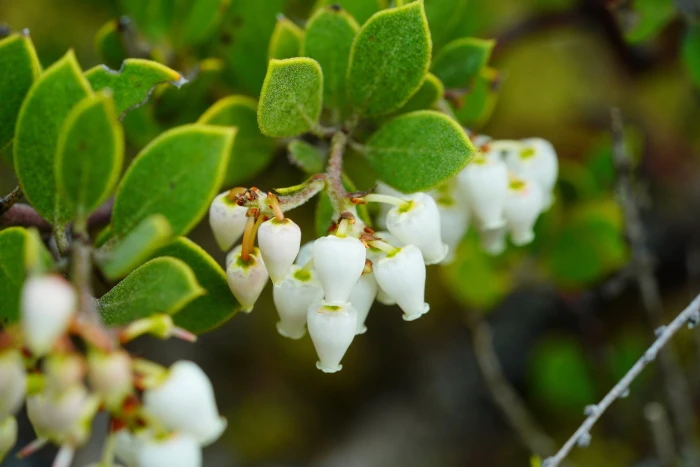Hooker’s Manzanita
(Arctostaphylos hookeri)
Hooker’s Manzanita (Arctostaphylos hookeri)
/
/

Michael Warner
CC BY 4.0
Image By:
Michael Warner
Recorded By:
Copyright:
CC BY 4.0
Copyright Notice:
Photo by: Michael Warner | License Type: CC BY 4.0 | License URL: http://creativecommons.org/licenses/by/4.0/ | Rights Holder: Michael Warner | Publisher: iNaturalist | Date Created: 2021-04-03T15:56:21-07:00 |























































Estimated Native Range
Climate Requirements for Gadsden, Alabama
| This Plant | Your Site | Plant Suitability for Your Location | ||
|---|---|---|---|---|
| • Precipitation | 11" - 85" | 55" | Aquatic | Aquatic |
| • High Temp. | 66°F - 97°F | 91°F | Your summer temperatures are normal for this plant. | Excellent |
| • Low Temp. | 24°F - 45°F | 31°F | Your winter temperatures are normal for this plant | Excellent |
This plant may not grow well at your location - your precipitation is too high.
Summary
Arctostaphylos hookeri, commonly known as Hooker’s Manzanita, is an evergreen shrub native to the coastal chaparral and woodlands of Central California, particularly the Monterey Bay area. It typically grows to a height of 1-6 feet (0.3-1.8 meters) and a width of 6-10 feet (1.8-3 meters), forming a dense, low mound or mat. The species is characterized by its smooth red bark and twisting branches. The small, leathery leaves are green and typically measure 0.5-1 inch long. From late winter to early spring, the plant produces dense clusters of urn-shaped flowers that are white to pink, followed by red, berry-like drupes that are attractive to birds.
Hooker’s Manzanita is valued for its drought tolerance, making it an excellent choice for water-wise gardens, and its ability to stabilize slopes due to its spreading habit. It is used in native plant gardens, as a ground cover, and in restoration projects. This plant thrives in full sun to partial shade, prefers well-drained soils, and requires minimal watering once established. While it is generally low-maintenance, it can be susceptible to fungal diseases such as root rot if overwatered or planted in poorly drained soils.CC BY-SA 4.0
Hooker’s Manzanita is valued for its drought tolerance, making it an excellent choice for water-wise gardens, and its ability to stabilize slopes due to its spreading habit. It is used in native plant gardens, as a ground cover, and in restoration projects. This plant thrives in full sun to partial shade, prefers well-drained soils, and requires minimal watering once established. While it is generally low-maintenance, it can be susceptible to fungal diseases such as root rot if overwatered or planted in poorly drained soils.CC BY-SA 4.0
Plant Description
- Plant Type: Subshrub, Shrub
- Height: 2-6 feet
- Width: 4-6 feet
- Growth Rate: Slow
- Flower Color: Pink, White
- Flowering Season: Winter, Spring
- Leaf Retention: Evergreen
Growth Requirements
- Sun: Full Sun
- Water: Very Low, Low
- Drainage: Medium, Fast
Common Uses
Bank Stabilization, Bee Garden, Bird Garden, Butterfly Garden, Deer Resistant, Drought Tolerant, Erosion Control, Groundcover, Hummingbird Garden, Low Maintenance, Rock Garden, Salt Tolerant, Showy Flowers
Natural Habitat
Coastal chaparral and woodlands of Central California, particularly the Monterey Bay area
Other Names
Common Names:
Scientific Names: Arctostaphylos hookeri, Arctostaphylos uva-ursi var. hookeri
GBIF Accepted Name: Arctostaphylos hookeri G.Don